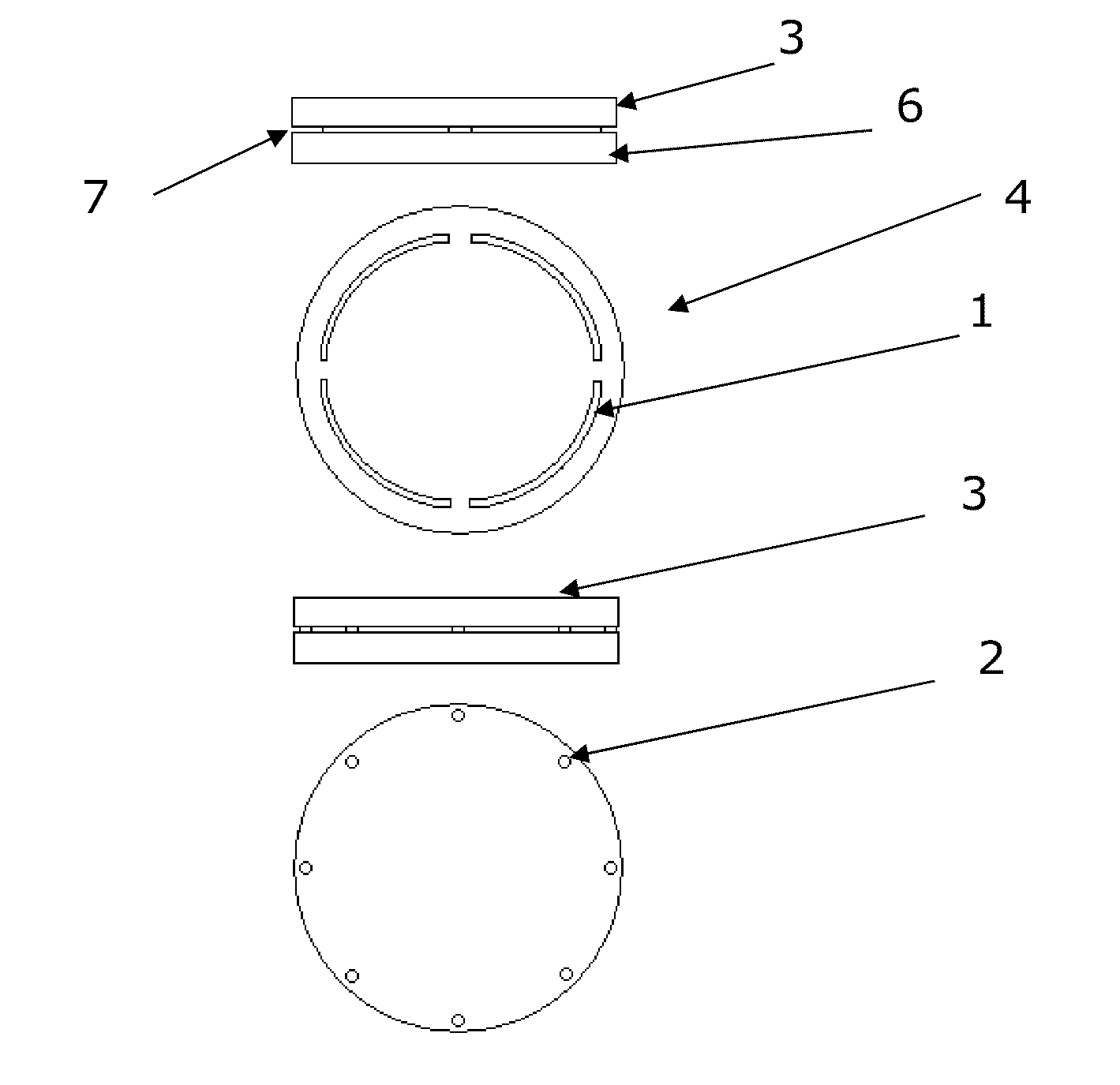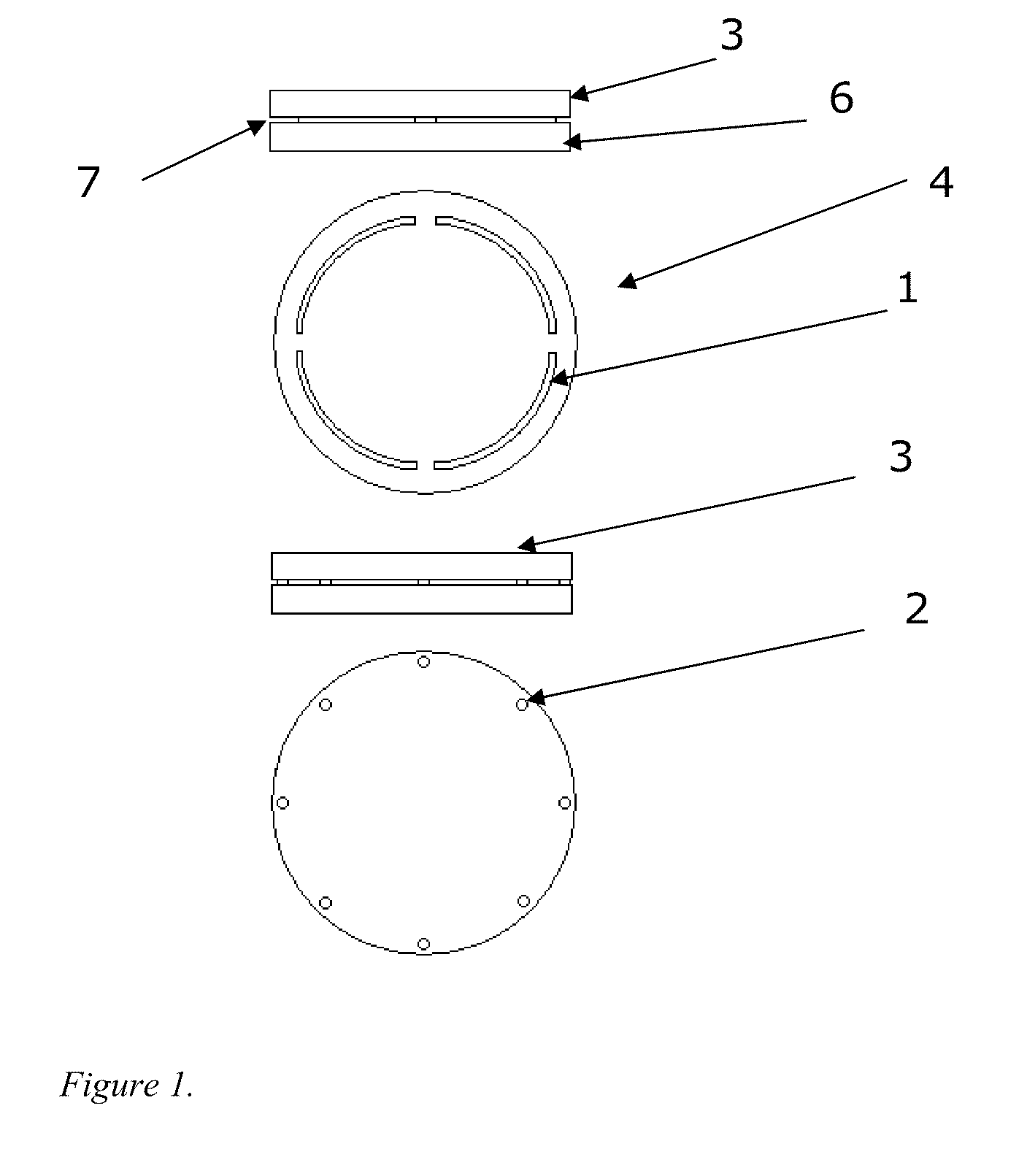Cell for confinement of very small volumes of soft matter and fluids
a cell and soft matter technology, applied in the field of cell for confinement of soft matter and fluids, can solve the problems of difficult experimental investigation of interface-induced effects in confined liquid crystal systems, and difficult to obtain the desired properties in small confined volumes
- Summary
- Abstract
- Description
- Claims
- Application Information
AI Technical Summary
Benefits of technology
Problems solved by technology
Method used
Image
Examples
example of application
[0065]Circular standard microscope cover slides with a diameter of 9 mm and thicknesses of 170 μm to 2000 μm were used as lids. A thin (100 nm) layer of SiO2 was evaporated on these. The spacers are fabricated by masking the areas, which after the fabrication step form the confined space containing the soft matter or fluid, and evaporating of metal to form circular walls. The geometry of the walls was circular, having a width of about 0.5 mm following the edge of the lids and included two channels for loading and unloading of sample material. Spacers with thicknesses of 30 nm to 280 nm were used. The viscous properties for thin, confined films of the liquid crystal 5CB (4-n-pentyl-4′cyanobiphenyl) where then studied with the novel device. For this purpose, as the bottom piece, a QCM-D sensor, which is a planar, circular quartz crystal with a 50 nm thick evaporated gold electrode on each side, was used. The gold electrode on the top of the quartz crystal had a diameter of 10 mm (slig...
PUM
| Property | Measurement | Unit |
|---|---|---|
| volumes | aaaaa | aaaaa |
| volumes | aaaaa | aaaaa |
| thickness | aaaaa | aaaaa |
Abstract
Description
Claims
Application Information
 Login to View More
Login to View More - R&D
- Intellectual Property
- Life Sciences
- Materials
- Tech Scout
- Unparalleled Data Quality
- Higher Quality Content
- 60% Fewer Hallucinations
Browse by: Latest US Patents, China's latest patents, Technical Efficacy Thesaurus, Application Domain, Technology Topic, Popular Technical Reports.
© 2025 PatSnap. All rights reserved.Legal|Privacy policy|Modern Slavery Act Transparency Statement|Sitemap|About US| Contact US: help@patsnap.com



